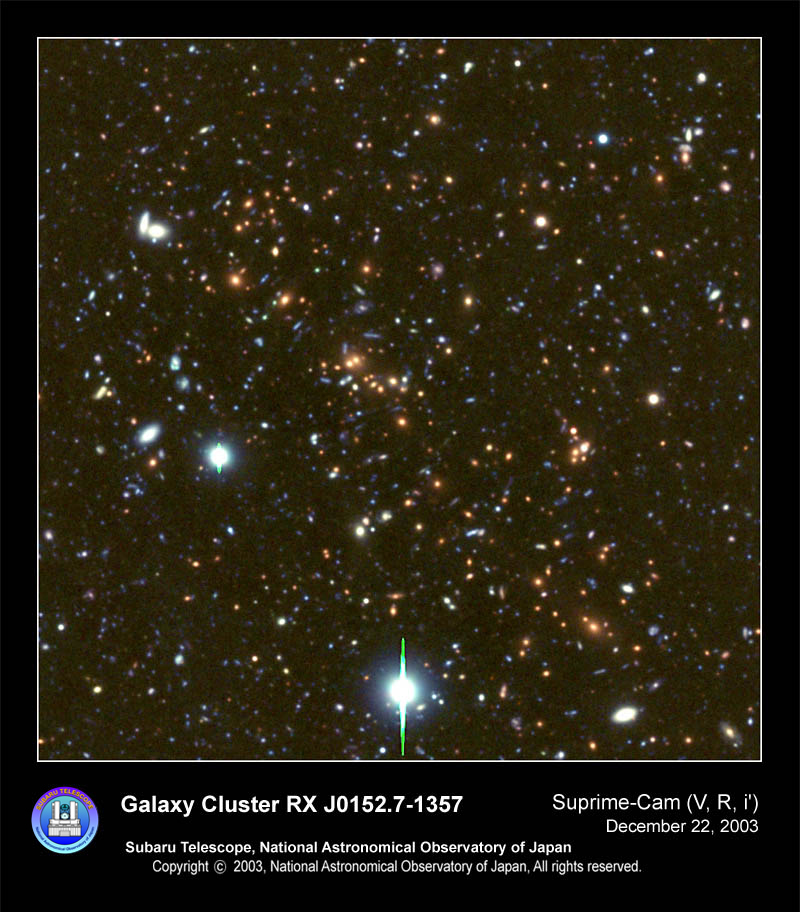Formation of a Rich Galaxy Cluster 7 Billion Years Ago
Astrophotography・

Galaxies tend to be clustered in space; these groups are called galaxy clusters. This image is a small part (1 percent) of a photo which captured the appearance of a rich cluster at a time when the Universe was half its present age, in other words 7 billion years ago. Each of the image’s edges corresponds to about 4.5 million light-years. The majority of the reddish galaxies belong to this galactic cluster, forming a chain-like structure composed of 3 main clumps stretching in a southwesterly direction, starting from the upper left of the image. It is thought that these clumps are attracted to each other through their mutual gravitational interactions, so that before long they will merge together, evolving into a single large cluster of galaxies. Here, we are witnessing the first stage in this process.
Panoramic View of an Ancient Celestial City
This image, taken as part of a research project (PISCES, representative: Kodama) to capture panoramic images of the formation of galaxy clusters and the evolution of the galaxies within them by using the Subaru Telescope, is the appearance of the central region of a rich galaxy cluster at a time when the Universe was approximately half its current age, about 7 billion years ago. Each side of the image corresponds to approximately 4.5 million light-years, in other words twice the distance between our Milky Way Galaxy and the neighboring Andromeda Galaxy. But hundreds of galaxies are crowded into this limited area. We found that the majority of the reddish galaxies belong to this galactic cluster, forming a chain-like structure composed of 3 main clumps stretching from the north-east (upper left in the image) to the south-west (lower right). It is thought that clumps of galaxies attract each other through gravity along this kind of chain structure, gathering and merging, evolving into a larger structure; that is to say we are seeing the formation site of a rich galaxy cluster. Thanks to the Subaru Telescope’s unique large-format camera, many original results have been obtained. Research into large celestial structures like galaxy clusters is one of them. Now, a new even-larger format camera boasting 7 times the field of view has started operations. We expect research into these kinds of large-scale structures in the distant Universe to advance at an ever quickening pace.
Text by: Tadayuki Kodama (Subaru Telescope)
Translation by: Ramsey Lundock (NAOJ)
Image Data
| Object | Galaxy Cluster RX J0152.7-1357 |
|---|---|
| Telescope | The Subaru Telescope |
| Instrument | Suprime-Cam (Subaru Prime Focus Camera) |
| Wavelengths | V (0.55 μm), R (0.65 μm), i’ (0.77 μm) |
| Exposure | 120 min. (V), 116 min. (R), 75 min. (i’) |
| Date | September 26 (V and i’), 27 (R), 2003 UTC |
| Observer | Kodama and collaborators |
| Copyright | National Astronomical Observatory of Japan |